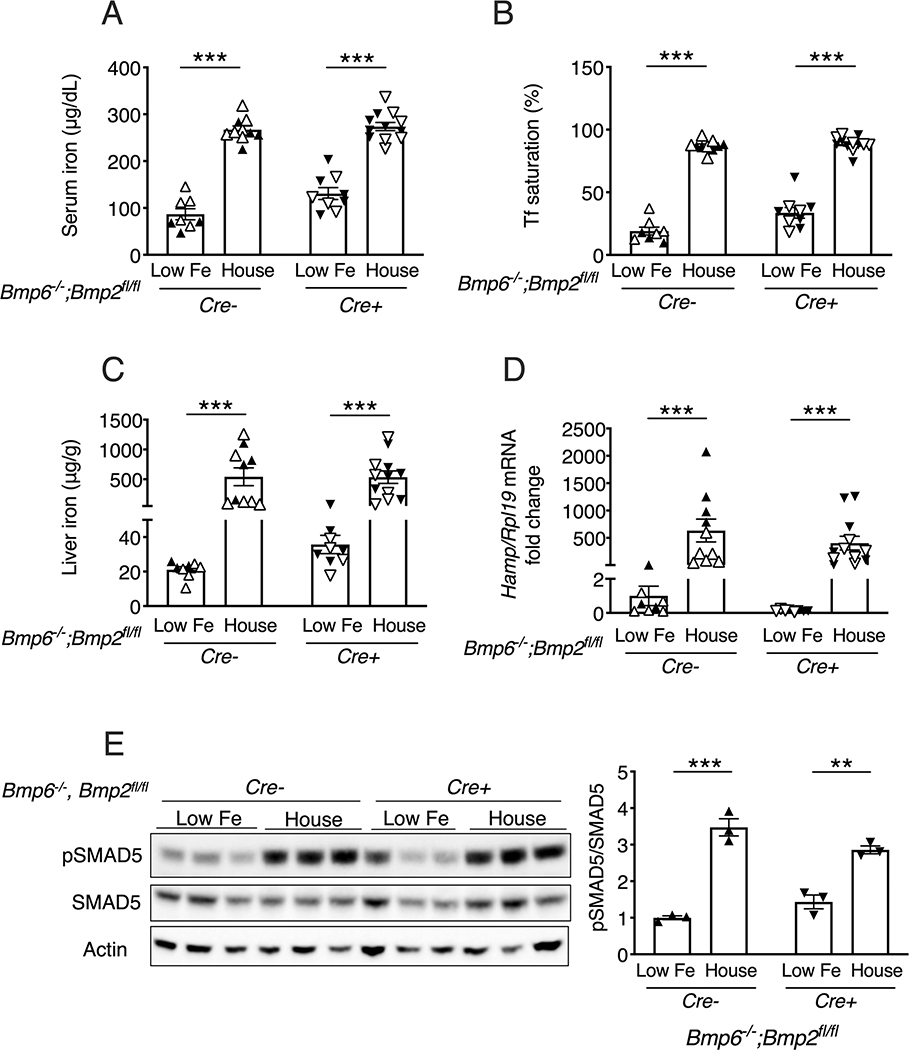Figure 3: Dietary iron loading induces liver SMAD5 phosphorylation and hepcidin expression in double global Bmp6/endothelial Bmp2 KO mice.
Littermate female (closed symbols) and male (open symbols) single global Bmp6 KO (Bmp6−/−;Bmp2fl/fl;Tek-Cre-) and double global Bmp6 and endothelial Bmp2 KO (Bmp6−/−;Bmp2fl/fl;Tek-Cre+) mice were placed on a low iron diet (2–6 ppm iron) at weaning for 3 weeks to prevent the iron overload induced by the house diet. Mice were either maintained on the low iron diet (Low Fe) or switched to the house diet for 1 more week. Mice were analyzed for (A) serum iron, (B) serum transferrin saturation, and (C) liver iron by colorimetric assay. (D) Livers were analyzed for Hamp relative to Rpl19 mRNA by qRT-PCR. The average of the single Bmp6 KO mice on the low iron diet was set to 1. (E) Livers were analyzed for phosphorylated SMAD5 (pSMAD5) relative to total SMAD5 and Actin protein by immunoblot and chemiluminescence quantitation. For all graphs, individual data points are shown and bars represent mean ± SEM. ** P < 0.01, *** P < 0.001 relative to low iron diet mice of the same genotype by Student’s t-test.

